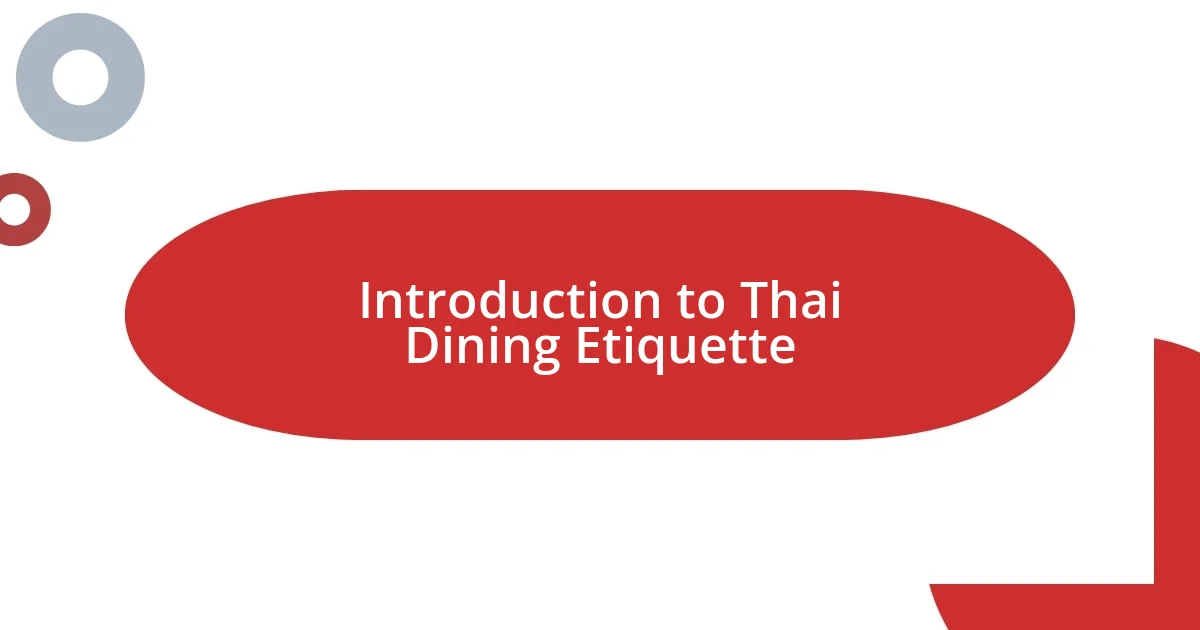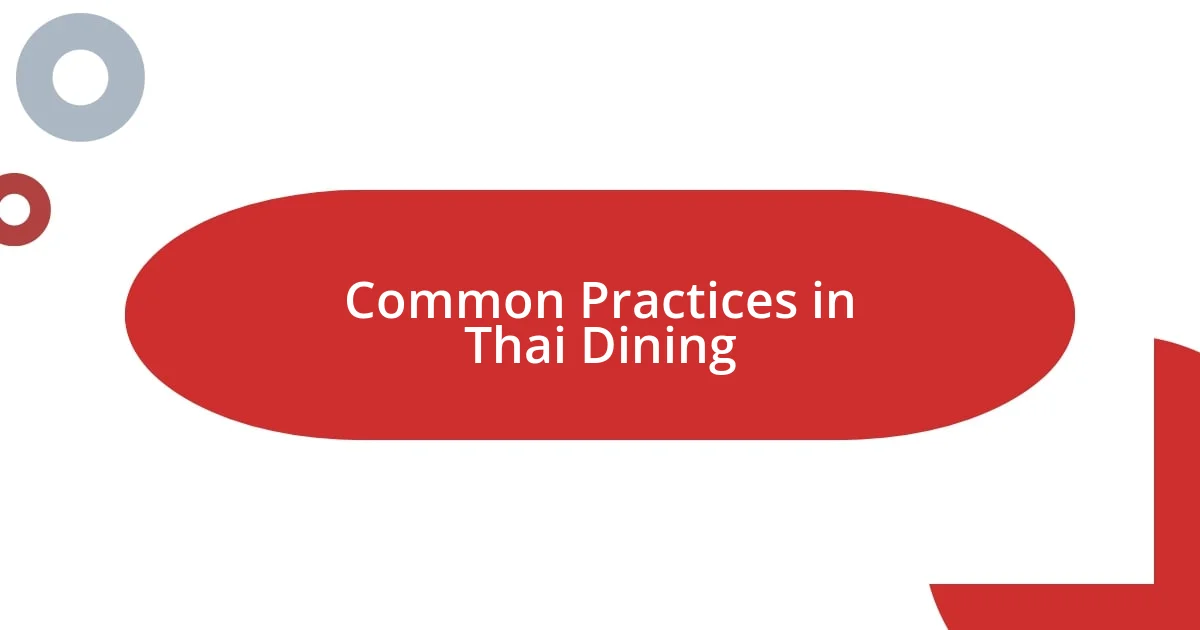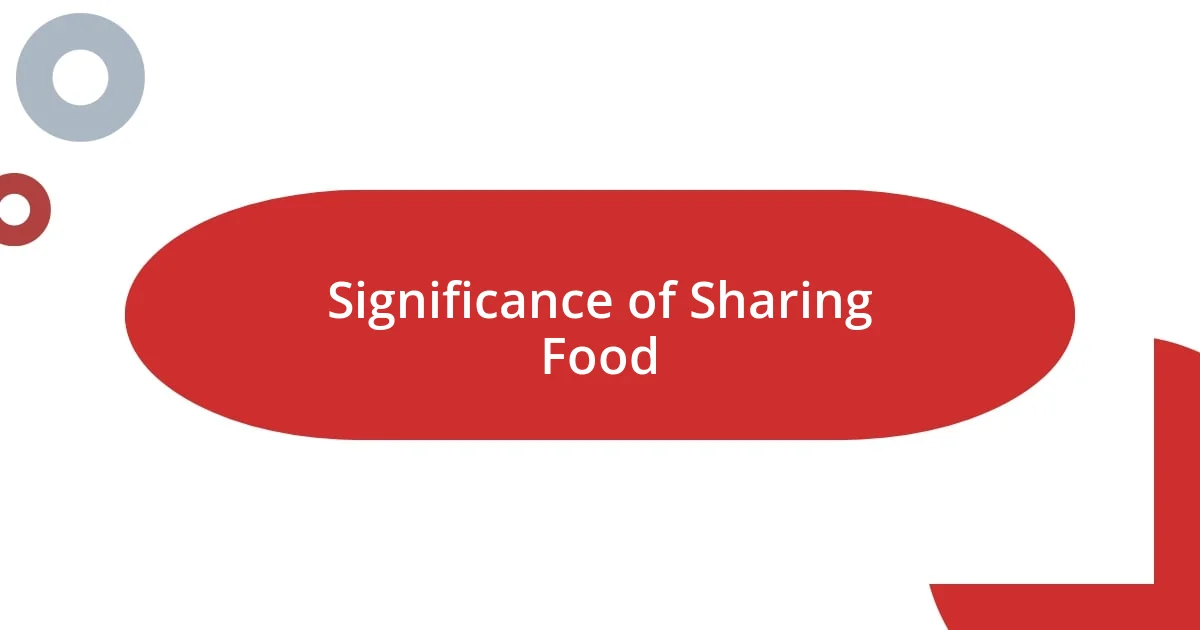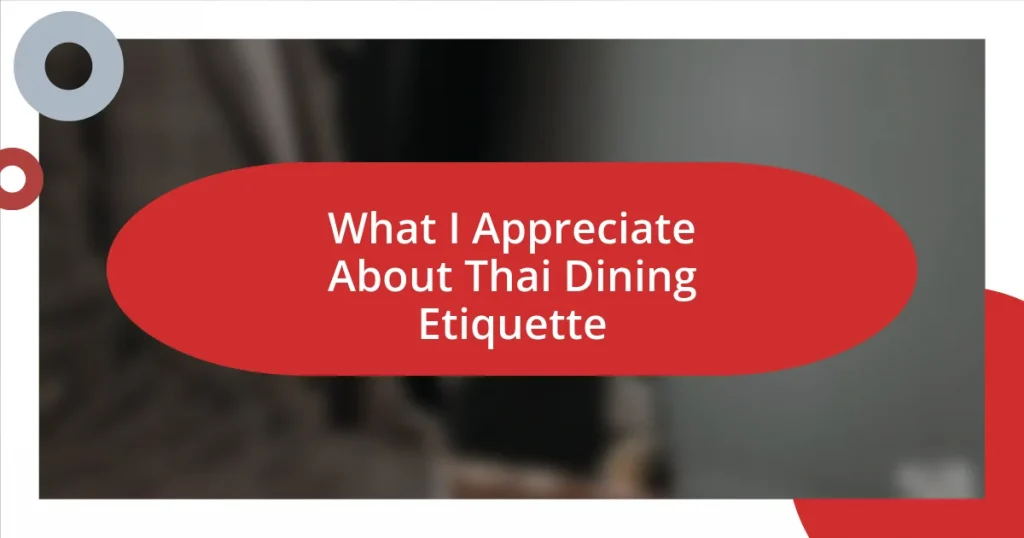Key takeaways:
- Thai dining emphasizes communal sharing, fostering connection and community among diners.
- Proper utensil usage, such as using a spoon for eating and holding bowls close, showcases respect for food and enhances the dining experience.
- Engaging in lively conversations, with active listening and shared stories, deepens relationships and enriches the overall meal experience.

Introduction to Thai Dining Etiquette
Thai dining etiquette is a beautiful tapestry of respect, tradition, and shared joy. I remember my first meal in Thailand, where I felt suddenly awash in a warm welcome. The simple act of eating became a shared experience that transcended the food itself.
When dining in Thailand, one quickly notices the emphasis on harmony and communal sharing. Have you ever been at a meal where everyone eagerly passes around dishes, each person taking a bit for themselves? This practice not only fosters a sense of community but also showcases the richness of Thai cuisine. It’s a delightful reminder that meals are not just about eating; they are about connecting.
Understanding the nuances of Thai dining etiquette can enhance any meal experience significantly. For instance, the importance of holding your bowl close while eating highlights respect for the food and the person who prepared it. Reflecting on this, I often wonder how much these small customs can deepen our appreciation for diverse cultures. Each bite becomes an experience of gratitude, blended with the joy of shared stories and connections around the table.

Common Practices in Thai Dining
The act of sharing dishes is central to the Thai dining experience. Whenever I join a meal with Thai friends, it’s remarkable to see everyone reaching for a bit of everything. I find that this culture of sharing brings a vibrant energy to the table, making each meal a lively exchange of flavors and stories. You truly feel like part of a family as you try different dishes together.
Another interesting practice is the use of utensils. I recall a time when I instinctively reached for a fork as my main utensil, but I quickly learned that in Thailand, the fork is primarily used to push food onto a spoon, which is then used for eating. This method struck me as particularly graceful and practical, allowing for a more refined dining experience. It’s fascinating how such small practices can reveal deeper cultural values, emphasizing manners and appreciation for the food.
Lastly, I appreciate the significance of the phrase “gin khao,” meaning “to eat rice.” In Thailand, asking someone if they’ve eaten is a common and caring way to check in on them. It made me realize that dining is not merely a physical necessity; it’s about fostering connections and showing care for one another. This simple sentiment transforms meal times into cherished moments of togetherness, enriched by the act of sharing both food and conversation.
| Common Practices in Thai Dining | Significance |
|---|---|
| Sharing Dishes | Fosters community and connection. |
| Using Utensils | Encourages grace and respect for food. |
| “Gin Khao” Phrase | Expresses care and connection among diners. |

How to Use Utensils Properly
Using utensils properly in Thai dining is an art in itself, uniquely tailored to enhance the experience. I remember sitting at a bustling street food stall, mesmerized by how seamlessly everyone maneuvered their utensils. The fork and spoon became an extension of their hands, showcasing an effortless elegance.
Here are some key points to keep in mind:
- Spoon for Eating: Always use the spoon to eat, as this is the main utensil. The fork’s role is mainly to push food onto the spoon.
- No Knives: Knives are typically unnecessary since food is often pre-cut. This promotes a certain intimacy with your meal, allowing you to savor each bite.
- Hold Your Bowl: It’s customary to hold your bowl close to your mouth while eating, which shows respect and appreciation for the meal.
At another family-style dinner, I was captivated by the grace with which my Thai friend balanced her bowl and spoon. She effortlessly scooped up her favorite green curry, a smile on her face as she savored the moment. This simple gesture was a profound reminder that dining is not just about consumption; it’s about intention and appreciation. Embracing these practices transforms each meal into a celebration, deepening my connection with both the food and those I share it with.

Understanding Conversation Etiquette
Understanding Conversation Etiquette in Thai dining is an essential part of the experience, and it’s something I cherish deeply. When I sat down at a table surrounded by friends, the vibrant banter filled the air. I noticed how everyone spoke warmly and often interrupted each other, which felt joyous rather than rude. Have you ever been in a conversation where everyone is so engaged that the lines of dialogue scramble together? That’s exactly the kind of energy present in Thai meals, where the focus is on connection rather than formalities.
There’s something special about listening actively in these conversations. I learned to lean in, showing genuine interest, particularly when a friend shared stories of their childhood. The easy flow of discussion, punctuated by shared laughter, made me realize that these moments are just as important as the food on our plates. When I engaged fully, I noticed my experience deepened; it was no longer just about eating but rather bonding over delightful memories.
Additionally, I discovered that it’s customary to occasionally pause and allow others to speak. During a dinner, I felt proud when I noticed how everyone would take subtle moments to let each person share their thought without interruption. This practice reaffirmed the importance of respect in conversations, and I couldn’t help but think—what would dining be like if we all embraced this kind of shared dialogue? That night, as I listened to stories, I was reminded that the richness of a meal often comes not just from flavors but from the relationships we build around the table.

Significance of Sharing Food
Sharing food holds a significant place in Thai culture, acting as a gesture of generosity and connection. I often find that during my meals, the act of passing dishes around isn’t just about satisfying hunger; it’s a way to express care and affection. The first time I experienced this, I was at a family gathering, where my friend coaxed me to try a bit of everything on the table. As she placed a spoonful of spicy papaya salad on my plate, I couldn’t help but feel a warm sense of belonging—a bond formed through simple acts of sharing.
There’s a profound sense of unity that comes from enjoying a meal together. Every dish placed at the center of the table seems to beckon everyone to come closer, both physically and emotionally. I remember one evening, surrounded by friends, where laughter and shared stories flowed just as naturally as the delicious coconut soup. The thrill of trying each other’s favorites created an atmosphere of trust and openness. What is it about communal dining that transforms mere food into meaningful experiences? It’s the feeling of being part of something larger— of saying, “Let’s enjoy this together,” which deepens our connections.
Ultimately, sharing food is a language of its own that transcends words. On a recent visit to a local Thai restaurant, I watched a couple whisper sweet nothings as they exchanged bites of their meals. I was touched by how their shared plates mirrored their shared lives—each flavor and spice another layer of their journey together. Such moments lead to a realization: dining isn’t just an act of nourishment; it’s an opportunity to cultivate relationships and create lasting memories. Isn’t it beautiful to think that the food we share can build bridges between us?















